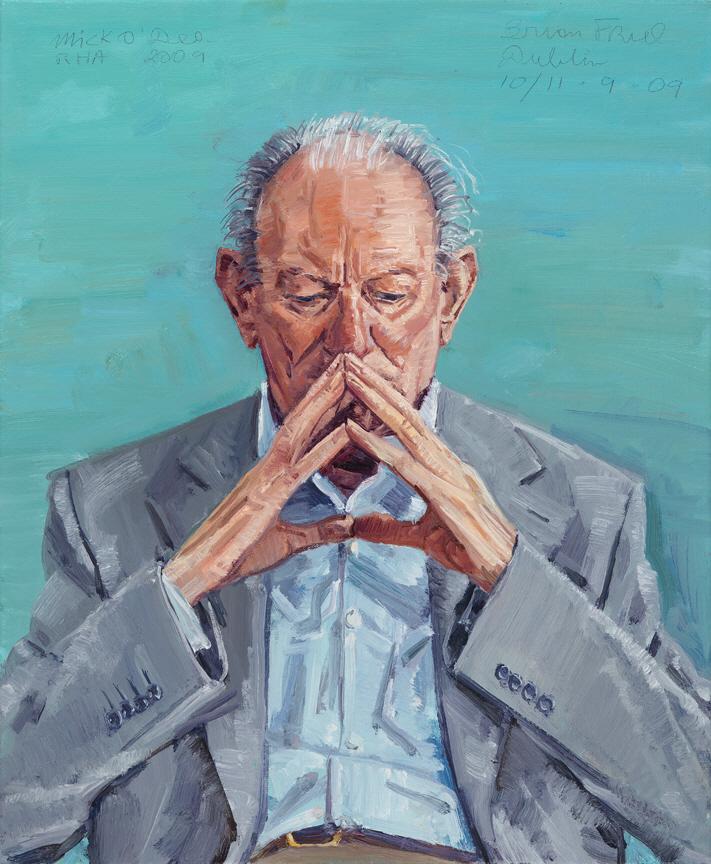Title: Portrait of Brian Friel (1929-2015), Playwright
Date: 2009
Medium: Oil on canvas
Dimensions:60.5 x 50.5 cm
Signed: upper left: MICK O'DEA/RHA 2009
Credit Line: Commissioned, National Gallery of Ireland, 2009
Object Number: NGI.2009.25
DescriptionBorn in Omagh, County Tyrone, Brian Friel worked as a primary school teacher until 1960, when he decided to dedicate himself full-time to writing short stories and plays. While his first major theatrical work, The Enemy Within (1962) received critical acclaim, Philadelphia Here I Come!, staged as part of the Dublin Theatre Festival in 1964, firmly established his reputation. Moving to Donegal in 1967, Friel kept an interested eye on Northern Ireland, producing a number of works inspired by events there. He was a founder member in 1980 of the theatre company Field Day, which staged his play Translations. That work, like his later Dancing at Lughnasa (1990), has become a classic of Irish theatre. Friel penned more than 20 plays in total, demonstrating consistently both formal innovation and an extraordinary skill in the writing of dialogue.
Though this portrait is tighter in finish and more compact in composition than many of O’Dea’s works, the vigorous use of paint, particularly evident in the face, is typical. The manner in which the flesh tones, which correspond approximately to the natural contours of the face, have been built up in layers, is also characteristic of the artist’s portraiture. The contemplative pose, meanwhile, seems appropriate for a sitter known for his deliberate observations. The way in which the sitter’s fingertips touch in front of his face lends intensity to the image without detracting from the likeness.
March 2016
Label TextBorn in Omagh, Co. Tyrone, Brian Friel dedicated himself full-time to writing short stories and plays in 1960. Friel penned more than twenty plays, including Philadelphia Here I Come!, staged as part of the Dublin Theatre Festival in 1964, and Dancing at Lughnasa, an acknowledged classic of Irish theatre, demonstrating both formal innovation and an extraordinary skill in the writing of dialogue. His contemplative pose in this portrait seems appropriate for a sitter known for his deliberate observations, while the way in which his fingertips touch in front of his face lends intensity to the image.

